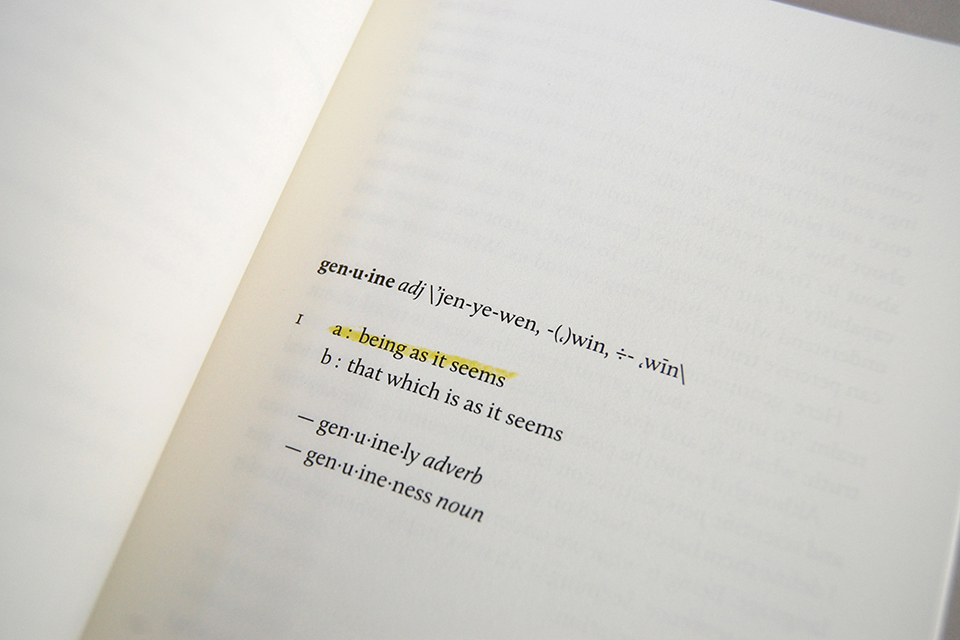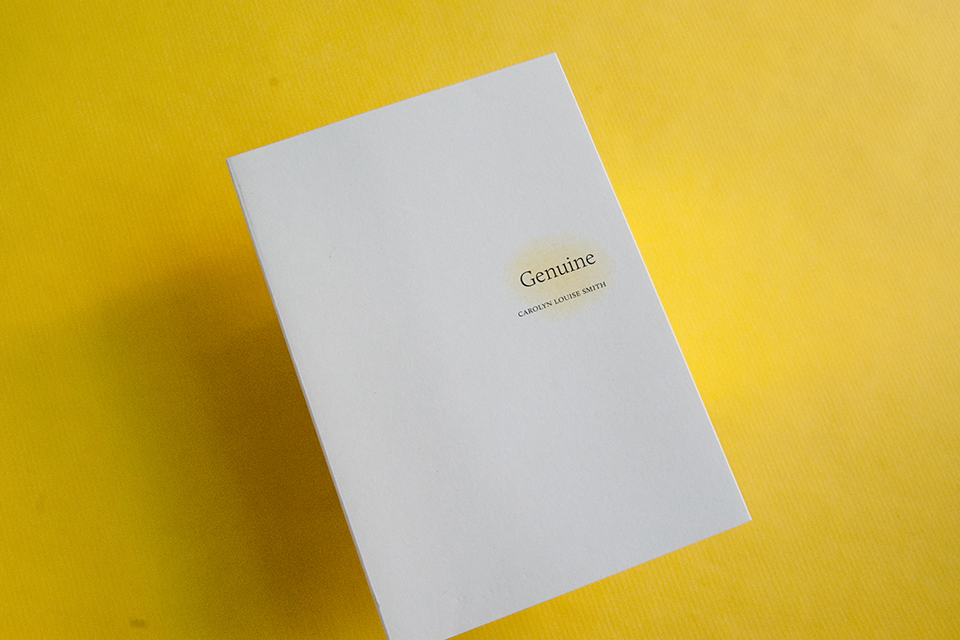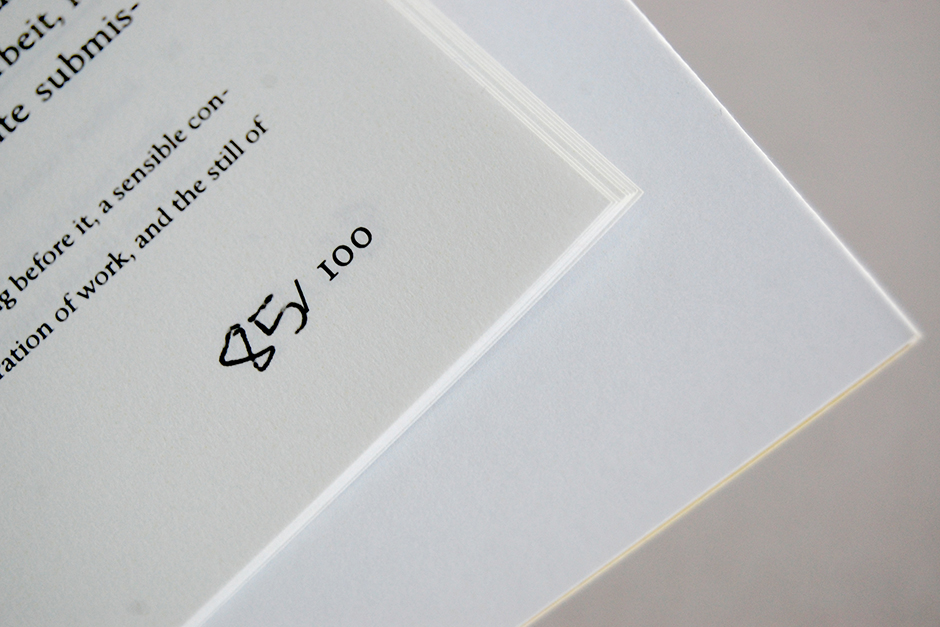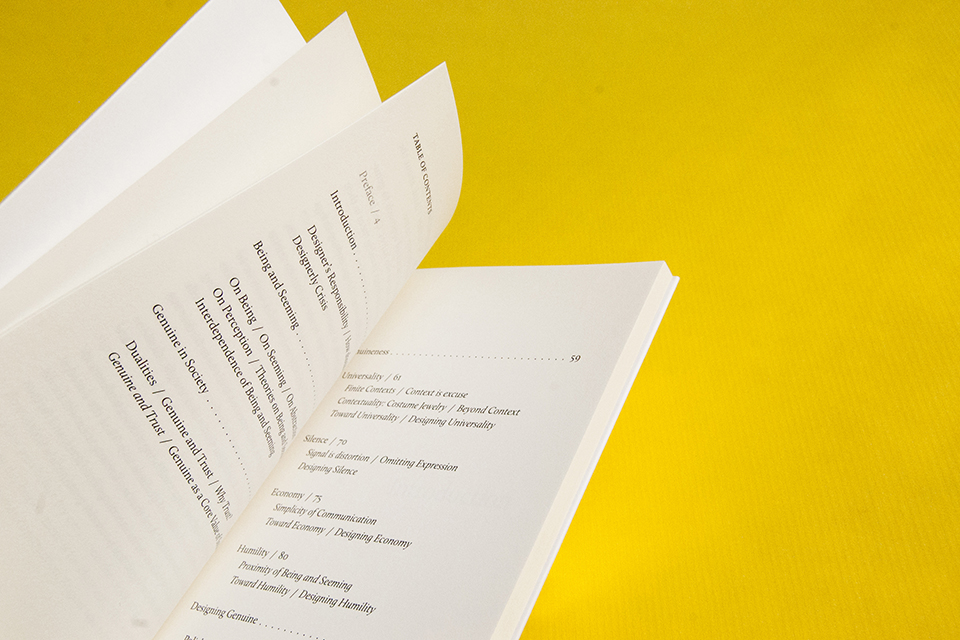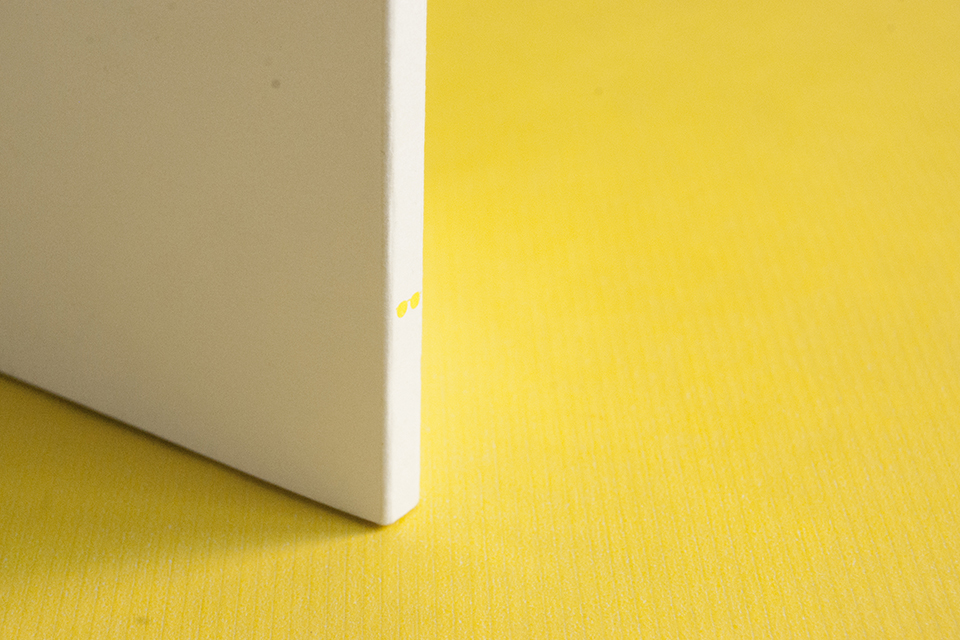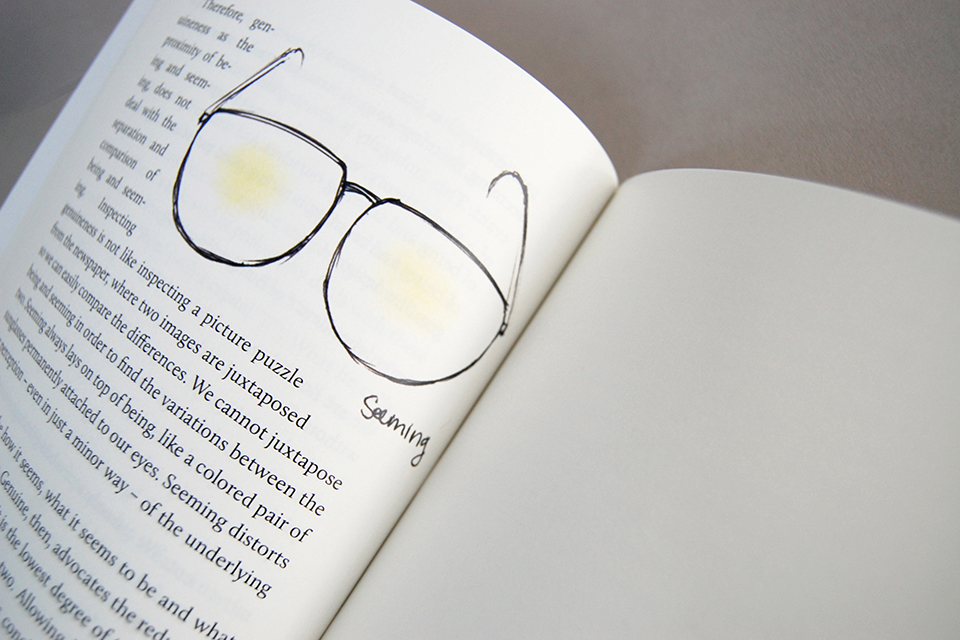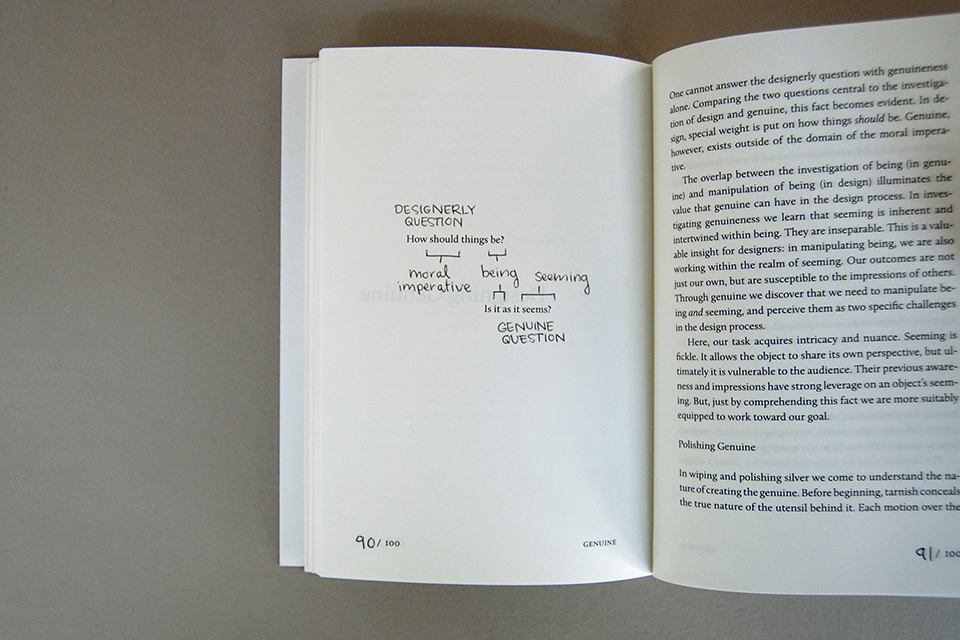Genuine
Can you make something genuine? So, why do designers keep trying?
Can you make something genuine? Does not, the constructing and making of something negative its genuineness? Where does genuineness come from then? Why do designers even bother?
This work of design theory takes a critical and philosophical look at genuineness, defining it as both and impossible and worthy target for designers to aspire to. It explores the ethical conundrum design dwells in, And it investigates the philosophical implications of reality and truth in design.
Design Theory and Philosophy
2011
Köln International School of Design
SUMMARY
Tasked with answering the question How should things be?, designers instinctively turn to genuineness as an answer. Yet, in contemporary culture, the value of the word genuine is disintegrating from overuse in marketing jargon. It is coming to symbolize an impossible nostalgic ideal. This work of design theory inspects genuineness from the perspectives of ontology, phenomenology and common experience. In it, I put the notion of genuineunder a microscope, revealing its inherent characteristics—universality, silence, economy and humility—as ideals toward which we can strive in design.
We all want to be genuine.
Designers are creators. In forming bits and pieces of the world, we are transforming it. And our decisions can have wide-reaching impacts on mankind, for which we carry responsibility. With this in mind, we ask, How should things be?, imbuing our work with an ethical dimension. And so often, we answer with what we hold to be a moral ideal: Genuine.
But, genuineness is impossible.
To ask if something is genuine is to ask Is it as it seems to be?. Measuring genuineness, then, requires an understanding of the object’s being and seeming, and their correlations. We are not able to understand being in its pure state though. Being is communicated through abstraction and can only be perceived via our fallible senses. Seeming always acts as a filter to our perception of being. Therefore, it is impossible to truly judge genuineness.
And, it is neither good nor bad.
Good and bad are not inherent to genuineness. Vegans would contend thatgenuine leather is not ‘good’ leather. A genuine person may still be genuinely evil. Nonetheless, the word has become a catchall for the morals our society strives for. Genuineness indicates truthfulness and trustworthiness. Our fixation on the Genuine is a reflection of the chaos we encounter in making consumption decisions in contemporary society. Genuine is neither good nor bad, but we want it.
What is genuine then?
Despite being unattainable, genuineness is still worth pursuing. The notions of being and seeming reveal some attributes of genuineness that designers can strive toward in their work. Being is universal; it embodies all and is relevant to all. Therefore genuine—defined as being as it seems—is universal. Being has no content, so the Genuine is silent. Being can only be communicated through seeming, so economy—a way of reducing seeming—is a method to approach genuineness. And because the Genuine is never more than it seems, humility is its parallel.
Genuine is universal.
In genuineness, universal means being free from the confines of context—relevant and relatable from every perspective. Designing genuine calls for increased understanding of the expansive array of people who will perceive and interpret our work, requiring us to respect their perspective, and grow compassion for their needs and desires.
Genuine is silent.
Genuineness advocates for less rather than more. In creating genuine, we move toward non-communication—reducing active portrayal rather than projecting meaning onto the surface of our creations. In this, meaning is allowed to emerge from our product’s being, shining outward from its essence.
Economy is a way toward genuine.
In designing genuine we look for the simplest possible way to achieve a task, reducing the being that underlies the form of our creations. We break down use and usability to their core and attempt to fulfill basic human needs. Our sense of force as designers gives way to the forces of the universe.
Humility is parallel to genuineness.
Never more than it seems the Genuine tends towards underrepresentation. In use and function, humble products are politely submissive. And in being humble, they are also compassionate; the user feels understood and cared for.
Designing the Genuine.
While genuine is not inherently moral, striving toward genuineness nonetheless makes us better designers. Genuine designs are transparent, enabling close scrutiny—a constructive tool for designers seeking morality. In pursuit of genuineness, designers discover the need to perceive being and seeming as two specific challenges in the design process. And above all, Genuineness incites curiosity and a search for truth. In striving for the genuine we learn to pull reality apart: look at it from different angles and in varying lights. In short, we learn to question the world in our attempt to reform it.

